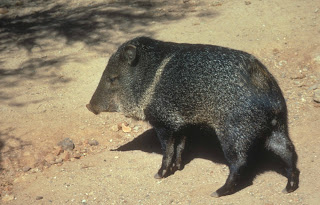Centipedes are distinguished from millipedes by the presence of only one pair of legs per body segment, and they usually have a flat body profile as compared to a millipede’s “domed” shape.
Giant redheaded centipedes are not frequently observed or collected, but those that make themselves known attract a great deal of attention because of their size and fierce appearance. Specimens average about 6 ½” in length, and they may reach nearly 8” in some instances.
All centipedes are believed to be predators. Their diet is composed primarily of insects and spiders, although some have been found feeding on toads, small snakes, and other vertebrates. The prey is captured and killed or stunned with the poison “claws” just behind the head, then each gland drains its toxic contents through a small opening near the tip of the fang.
This type of centipede lays eggs, often in cavities hollowed out in pieces of decayed wood, and then they watch over them and the juveniles that hatch. The female winds herself around the egg mass, her legs directed toward the eggs, and then the newly hatched young.
This might be one neighbor you’ll only want to wave to over the fence!





